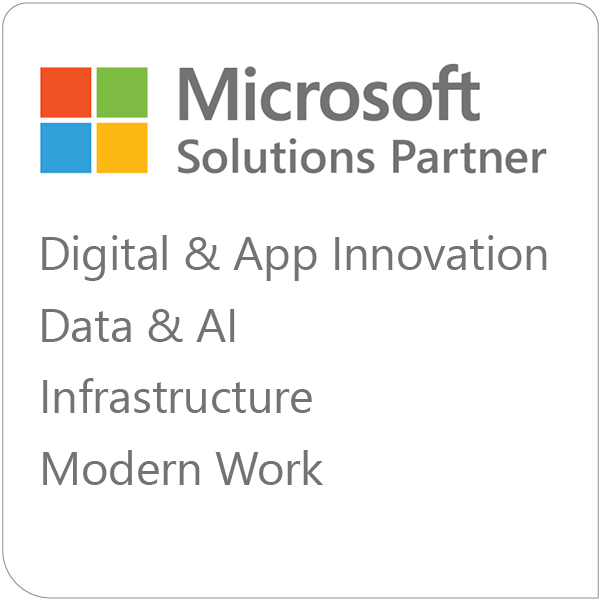Cloud migration is a top goal of many organizations. In fact, 75% of IT leaders reported an increase in their budget for public cloud last year. The number of organizations operating “mostly on-premises” has fallen to just 7%.
These businesses want to take advantage of the cost savings and performance improvements of cloud transformation. But moving to the cloud can be a long process, during which organizations end up with a hybrid environment — some workloads and applications are in the cloud while others remain on-premises.
Moving even a few applications to the cloud has clear advantages over remaining on-premises. However, spending too much time in a hybrid configuration can also lead to management issues, additional costs, and other challenges. In this article, we’ll look at the pros and cons of hybrid cloud and how you can get the most out of your cloud migration.
What is hybrid cloud?
Hybrid cloud combines the resources and services from multiple computing environments. In this article, we’re focusing on configurations that include both cloud and on-premises infrastructure — a common situation for businesses in the process of a cloud migration.
Ideally, hybrid cloud allows for the seamless transfer of data and applications between environments, but the actual level of interoperability in hybrid cloud setups varies greatly.
For Azure users, Microsoft provides a few solutions to keep your hybrid environment operating smoothly, including:
- Azure Stack — Extends Azure services to your on-premises environments, letting you leverage some benefits of the cloud across your entire ecosystem.
- Azure Arc — Allows you to build cloud-native applications and operate them anywhere, including on-premises.
- Azure VMware Solution — Helps you move your on-premises VMware workloads to Azure and integrate your VMware environment with Azure, allowing you to continue managing your existing environments with familiar VMware tools while also taking advantage of the cloud.
Advantages of a hybrid environment
If you’re like the vast majority of businesses, your transition to the cloud is already underway. That’s great, because operating in the cloud has a lot of advantages — even if you haven’t moved everything yet.
Here are the top benefits of a hybrid cloud environment.
Ease of transition
Many companies like a hybrid environment because it allows for a slower move to the cloud. You don’t have to invest the time and money to migrate all of your workloads and applications at once and you can start to benefit from cloud transformation without disrupting critical legacy systems.
For companies without a lot of cloud experience, migrating small and simple workloads can be a great introduction to cloud before making a bigger investment.
Scalability
One of the biggest benefits of cloud computing is scalability. Cloud gives you the ability to efficiently handle varying workloads and seasonal spikes without investing in expensive on-premises infrastructure.
You don’t have to be operating entirely in the cloud to reap this benefit. Even in a hybrid environment, organizations can leverage the cloud’s scalability by selectively deploying specific workloads to the cloud while keeping others on-premises.
Security
Migrating to the cloud lets you take advantage of security features that would cost a lot more to run on-premises, so it’s a good choice for workloads that need higher security. Plus, if your company plans to invest in cyber insurance, moving to the cloud will help you meet the requirements.
Disadvantages of a hybrid cloud environment
There’s no doubt that you should be taking advantage of cloud technology, and it’s often inevitable that you’ll spend some time in a hybrid environment as you transition. But there are some downsides and risks of hybrid cloud that companies should keep in mind.
Management challenges
If you have both cloud and on-premises technology, it’s important to maintain seamless integration between your different environments and implement effective monitoring and governance practices. Without proper management, a hybrid environment can become fragmented and challenging to manage, leading to increased operational overhead and inefficiencies.
For example, an organization might have some mailboxes hosted on-premises while others are migrated to Microsoft Exchange Online. This can lead to difficulties with things like mail and calendar delegation, credential prompting, and splitting which resources are migrated.
Your business should have a plan for the efficient management of all of your resources, even if your hybrid configuration is temporary.
End user challenges
To keep your business running smoothly throughout your cloud migration, it's essential to maintain a positive end user experience. In a hybrid environment, that can get challenging.
For example, users may need to manage multiple sets of credentials for different workloads due to the applications being located in different environments. This leads to increased help desk calls and frustration for everybody. While there are specific tools available to integrate passwords and accounts in hybrid environments, they can create overhead for your IT support staff.
Additional costs
Moving some of your applications to the cloud can save you money, but ultimately, lingering too long in a hybrid environment gets expensive. The continued investment in on-premises infrastructure and the complexity of managing the hybrid setup can gradually erode any potential savings from your cloud resources.
Common expenses in a hybrid environment include:
- Server and SAN (storage area network) hardware maintenance
- VMware licensing
- Data backup and recovery licenses like Veeam, Datto, or others
- Colocation costs, including rack space, power, cooling, and cross-connects
- Possible Microsoft legacy licensing consumption
In an on-premises environment, it’s typical to over-provision hardware and resources to accommodate peak capacity or future growth, which can lead to overinvestment and underutilization of resources during periods of low demand. Cloud, on the other hand, is usage based, meaning you can scale up and down and only pay for the resources you actually use.
To be able to fully recognize the cost optimization advantages of the cloud, you need to start shedding legacy costs. It’s a complex situation and working with an experienced partner can help ensure that you’re not paying too much to keep your hybrid environment running.
Incompatibilities
Sometimes, on-premises and cloud environments aren’t fully compatible. This can lead to a number of problems, including data synchronization issues, latency problems, and inconsistent security measures.
Tips for an efficient cloud migration
You can migrate to the cloud without getting stuck in an inefficient hybrid cloud situation — it just takes a little planning. Here are a few tips for ensuring you’re getting the best results from your migration.
Start with a strategy
A lot of the issues with hybrid cloud environments come from approaching the project without a comprehensive strategy. Even if you’re in a transitional phase of cloud migration, your environment doesn’t have to be a messy hodgepodge.
For Azure Cloud users, Microsoft provides the Cloud Adoption Framework (CAF) to help you create and implement a cloud strategy for Azure. You can check out our guide to CAF here.
Involve everyone from day one
Crafting a cloud strategy isn't just an IT team task. Many organizations overlook the importance of aligning every impacted department from the beginning of their cloud journey.
Executive sponsors, security teams, application owners, database administrators, and others should all be involved from the start. No individual or team should be pulled into the project after the strategy and planning phase as an afterthought.
When you involve all teams from the get-go and consider their individual priorities and goals, your migration efforts and the ongoing support of your cloud-based workloads will be more enjoyable and more likely to succeed.
Prioritize full migration
Strive for fully migrating to the cloud with minimal business impact.
The sooner you're out of a hybrid cloud configuration, the sooner you're no longer managing two (or more) environments. Migrating fully lets you leverage optimizations that can enhance redundancy, security, and cost savings.
Work with a trusted partner
The performance, security, and cost of your cloud environment all depend on the choices you make during your cloud migration. It’s worth working with an expert cloud consulting team to make sure you get it right.
A strong partner can help you push forward and not let your cloud journey become stagnant. Your partner should be able to leverage their past experience to help you overcome any challenges that arise in your cloud migration.
At Emergent Software, we have extensive experience helping customers with cloud transformation. We’ve seen all the hybrid cloud challenges discussed in this article and we’ve helped our clients overcome them.
Get in touch to talk about your cloud migration project.






